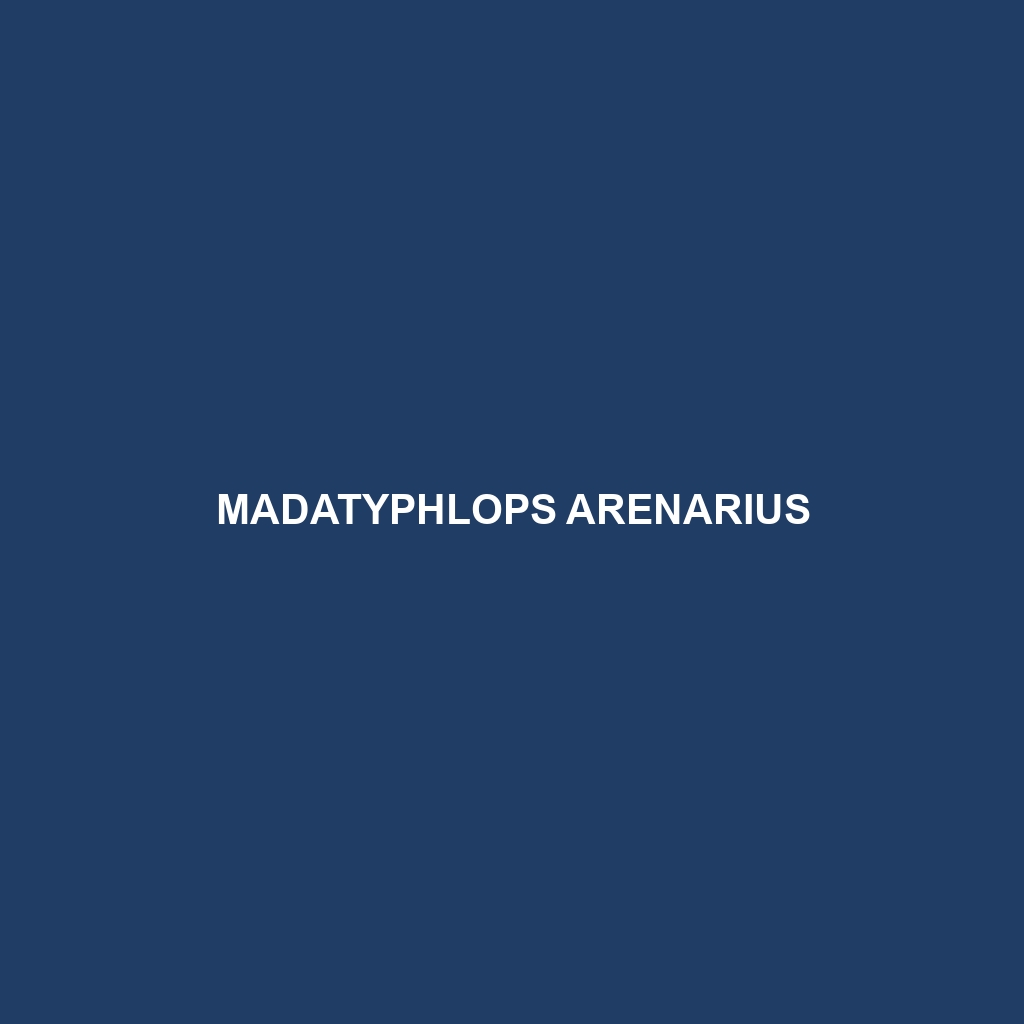Common Name
Madatyphlops arenarius
Scientific Name
Madatyphlops arenarius
Habitat
The Madatyphlops arenarius, commonly known as the sand-dwelling blind snake, primarily inhabits arid and semi-arid regions, particularly in sandy environments such as deserts and coastal dunes. This species is predominantly found in the southern regions of Africa, with a notable presence in countries like South Africa and Namibia. The climate of these habitats is characterized by low rainfall and significant temperature variations, creating ideal conditions for this undetectable creature to thrive beneath the surface. The sandy soils provide both camouflage and access to its food sources, facilitating a life spent largely underground.
Physical Characteristics
Madatyphlops arenarius does not exceed a length of approximately 30 cm, making it a relatively small member of the Typhlopidae family. Its body is elongated and cylindrical, similar in appearance to a worm, which aids in burrowing through the sand. The skin exhibits a smooth texture and is often colored in various shades of beige or pale brown, allowing it to blend seamlessly into its sandy surroundings. A notable feature is its highly reduced eyes, which are covered by scales, rendering it effectively blind. This adaptation is typical of fossorial snakes, providing them with protection from predators and allowing them to navigate their subterranean habitats.
Behavior
The behavior of Madatyphlops arenarius can be classified as predominantly nocturnal, emerging from its burrows during the cooler nighttime hours to forage for food. Its movement is characterized by a distinctive undulating motion as it burrows through loose sand. Little is known about the social structure among these snakes, but they are typically solitary outside of the mating season, preferring to avoid encounters with others of their species. Mating rituals have not been widely documented; however, it is believed that males may engage in subtle displays to attract females during the breeding season.
Diet
Madatyphlops arenarius is primarily an insectivore, feeding mainly on small invertebrates such as ants and termites. Its burrowing lifestyle facilitates access to these prey species, as it can follow their trails underground. The snake utilizes its sensitive tongue to detect chemical cues in the environment, enabling it to locate food sources effectively. This dietary specialization is crucial in arid ecosystems where food availability can be limited. Its feeding patterns are opportunistic, generally involving ambushing prey rather than active hunting.
Reproduction
The reproductive cycle of Madatyphlops arenarius typically occurs during the warmer months. After mating, the female lays a clutch of 2 to 5 eggs, which she buries beneath the sand for protection. The incubation period lasts about 60 to 90 days, with environmental temperature playing a significant role in development. Upon hatching, the juvenile snakes are fully independent, receiving no parental care. This reproductive strategy of laying eggs in concealed locations minimizes predation risks for the offspring.
Conservation Status
Currently, the conservation status of Madatyphlops arenarius is classified as Least Concern according to the IUCN Red List. However, habitat destruction due to urbanization and agriculture poses significant threats to its populations. Conservation efforts are necessary to monitor its habitat and mitigate human impacts. Awareness initiatives may promote understanding of this species’ role within its ecosystem, aiding in its continued survival.
Interesting Facts
One fascinating aspect of Madatyphlops arenarius is its ability to dig and navigate through sandy environments with remarkable efficiency. This snake has developed a unique adaptation whereby it can sense vibrations within the ground, allowing it to detect both prey and potential threats. Another interesting fact is that Madatyphlops arenarius is often mistaken for worms due to its slender, elongated body, which helps it avoid detection by potential predators.
Role in Ecosystem
Madatyphlops arenarius plays an essential role in its ecosystem as both a predator and prey. By controlling the populations of termites and ants, it contributes to the ecological balance within its arid habitat. Furthermore, it serves as a food source for larger predators, such as birds and mammals, illustrating its importance in the food web. Its presence indicates a healthy ecosystem, underscoring the need for continued conservation efforts in its native habitats.
